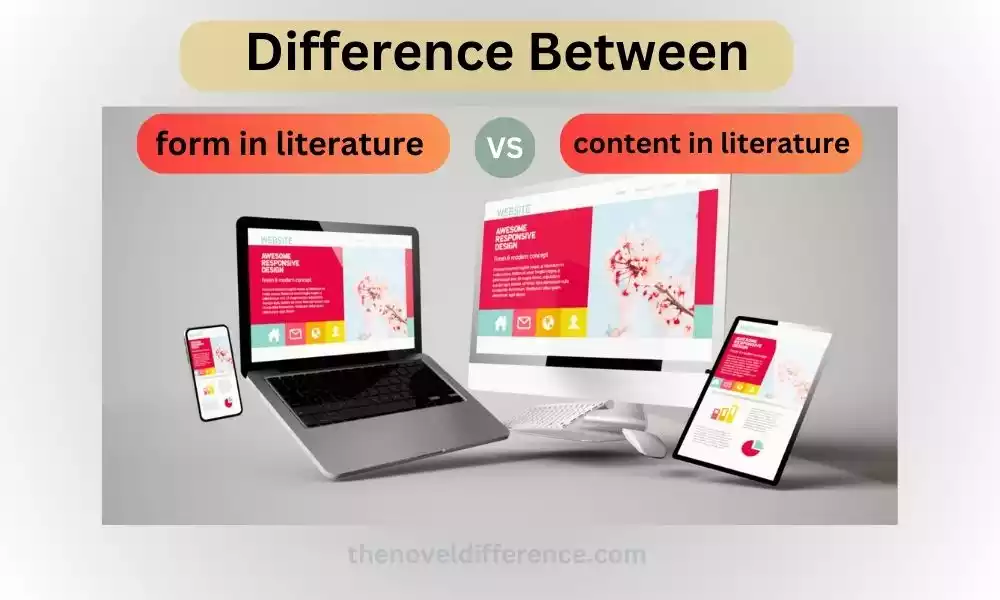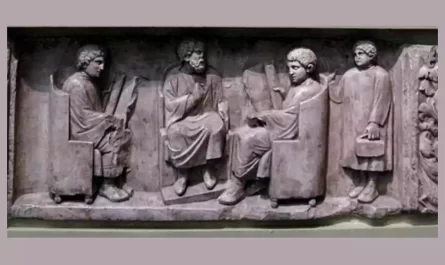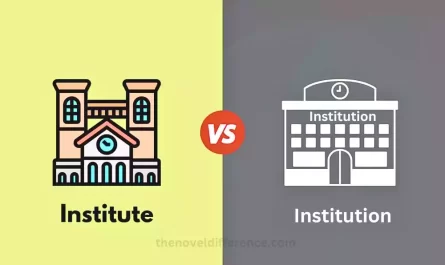Definition of Form and Content in Literature
Form in literature: Form in literature refers to the external structure, framework, or arrangement of a literary work. It encompasses the physical aspects and artistic techniques employed by the author to give shape and organization to the content.
The form of a literary work includes elements such as the genre, narrative structure, rhyme scheme (in poetry), point of view, sentence structure, use of literary devices, and overall stylistic choices.
The form provides a framework for the content, guiding the way the story or message is presented to the reader. Establish the tone, mood, atmosphere, and pace/rhythm of work.
Different literary forms have distinct characteristics and conventions that shape the way the story or ideas are conveyed.
Analyzing the form of a literary work involves examining the structural and technical aspects, paying attention to how the author utilizes various literary devices, narrative techniques, and language choices to create a cohesive and meaningful piece of writing.
By closely studying its form, readers can gain valuable insight into an author’s artistic intentions, the reader’s experience, and the overall aesthetic qualities of his or her work.
Content in literature: Content in literature refers to the internal substance, subject matter, or ideas conveyed within a literary work. Plot encompasses characters, setting, themes, and symbols; together these components aim at conveying an overall meaning or message from author to reader.
Content in literary works entails its narrative: its events and interactions among characters; settings described; as well as any unexpected twists or resolutions in its plotting or resolutions.
It also explores the underlying themes and ideas explored within the text, such as love, friendship, power, justice, or societal issues. The content may reflect the author’s observations, experiences, social commentary, or philosophical musings.
Analyzing the content of a literary work involves examining the ideas, emotions, and insights presented by the author. It entails identifying the central themes, dissecting character motivations, and arcs, analyzing the use of symbols and imagery, and interpreting the overall message or commentary the author is conveying.
By digging deep into the content, readers can gain more of an understanding of authorial viewpoints, the relevance of work to society or human experience, and possible layers of meaning within the text.
Importance of understanding the difference between form and content
Understanding the difference between form and content in literature is crucial for several reasons:
Literary Analysis: Deliberately distinguishing form from content allows for a deeper and more nuanced analysis of literary works. By examining the structural elements and techniques used in the form, and separately exploring the themes, ideas, and messages conveyed in the content, readers can gain deeper insights into the author’s intentions, artistic choices, and the overall impact of the work.
Appreciating Artistic Choices: Recognizing the distinction between form and content helps readers appreciate the author’s artistic decisions. Authors make deliberate choices in selecting the form that best suits their content. Understanding these choices enables readers to engage with the work more effectively, recognizing the author’s creative craftsmanship and the ways in which the chosen form enhances or complements the content.
Interpreting Meaning: Separating form and content aids in the interpretation of meaning within a literary work. By analyzing the content independently, readers can identify underlying themes, explore character motivations, and grasp the intended messages or social commentaries. Meanwhile, analyzing the form helps readers understand how the structure, style, and literary devices contribute to the overall meaning, adding depth and nuance to the interpretation.
Evaluating Literary Merit: Understanding the difference between form and content allows for a more objective evaluation of a literary work’s quality and significance. By considering both aspects, readers can assess the effectiveness of the author’s execution of the chosen form in conveying the content. This evaluation helps distinguish between works that may have profound content but lackluster form, or vice versa, contributing to a more comprehensive critique of the work.
Enhancing Communication: Recognizing the distinction between form and content facilitates effective communication about literature. It enables readers to articulate their interpretations, insights, and critiques more clearly, fostering meaningful discussions and deeper engagement with the work. Moreover, understanding the difference helps readers connect with the author’s intended message and communicate their own thoughts and reactions more accurately.
In essence, understanding the difference between form and content in literature enhances the reader’s appreciation, interpretation, and analysis of literary works, enabling a more profound engagement with the artistic and intellectual aspects of literature.
What is Content in Literature?
Content in literature refers to the substance, subject matter, or ideas conveyed within a literary work. It encompasses the narrative elements, themes, symbols, and messages that the author presents to the reader.
The content of a literary work includes the plot, which refers to the sequence of events and actions that drive the story forward. It involves the development of characters, their interactions, motivations, and conflicts. Content includes both setting (time, place, and environment in which the story takes place) as well as the content itself.
Furthermore, content explores the underlying themes and ideas that the author wishes to convey. Themes are the central ideas or concepts explored in the work, such as love, betrayal, identity, justice, or the human condition.
Authors use various literary techniques, such as symbolism, allegory, and metaphor, to express these themes and provoke thought and reflection in readers.
The content of a literary work can also encompass social commentary, philosophical musings, or exploration of cultural, historical, or political contexts. Reflective of an author’s observations, experiences, beliefs, and perspectives about human experience and the world we inhabit, this work offers deep insight.
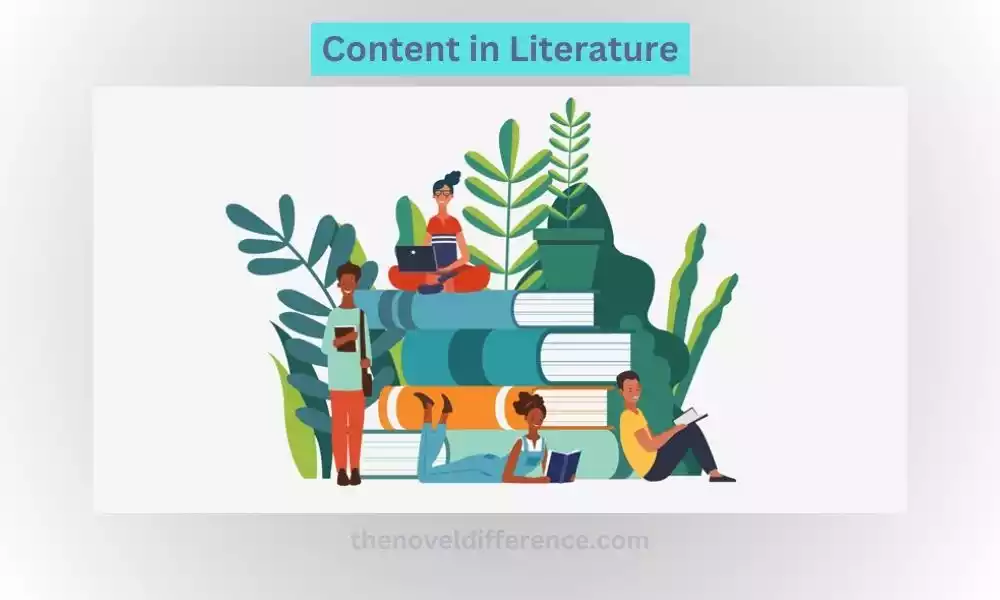
Analyzing the content of a literary work involves delving into the narrative elements, identifying themes, interpreting symbols, and discerning the author’s intended messages. By engaging with content, readers can gain a deeper insight into its significance, relevance, and layers of meaning it contains.
What is Form in literature?
Form in literature refers to the external structure, framework, or arrangement of a literary work. It encompasses the physical aspects and artistic techniques employed by the author to give shape and organization to the content.
The form of a literary work includes elements such as the genre, narrative structure, rhyme scheme (in poetry), point of view, sentence structure, use of literary devices, and overall stylistic choices. It provides a framework for the content, guiding the way the story or message is presented to the reader.
Different literary forms have distinct characteristics and conventions that shape the way the story or ideas are conveyed. For example, a novel typically follows a prose narrative form with chapters, whereas a poem may utilize verse and specific poetic devices like meter, rhyme, or line breaks.
The form of a literary work contributes to its overall aesthetic and artistic qualities. Setting the appropriate atmosphere and rhythm are integral parts of creating quality works of art. By employing specific form-related techniques, authors can create emphasis, evoke emotions, or convey meaning in unique ways.
Analyzing the form of a literary work involves examining the structural and technical aspects. It entails studying how the author utilizes various literary devices, narrative techniques, and language choices to create a cohesive and meaningful piece of writing.
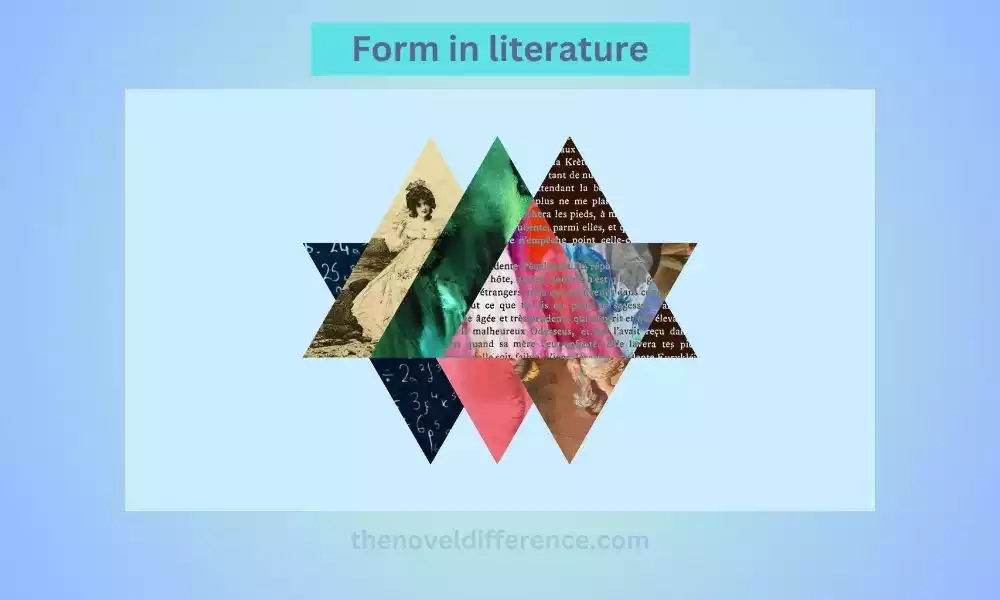
By understanding form, readers can gain insights into an author’s artistic intentions, its effects on reader experience, and the overall stylistic properties of his or her work.
The Interplay Between Form and Content
The interplay between form and content in literature is a dynamic relationship where the external structure and artistic techniques (form) interact with the internal substance, subject matter, and ideas (content) of a literary work.
The way in which form and content interact significantly influences the overall impact, interpretation, and aesthetic experience of the reader.
Enhancing Meaning: The form of a literary work can enhance and deepen the meaning of the content. The author’s choice of form, such as using poetic language, unique narrative structures, or experimental techniques, can create additional layers of meaning and evoke specific emotions or responses in the reader. The form amplifies the content’s intended message and enriches its impact.
Shaping Interpretation: The form influences how readers interpret and engage with the content. Different forms evoke different expectations and responses. For example, a poem’s condensed language and use of imagery may require more careful and concentrated reading, while a novel’s extended narrative allows for in-depth characterization and complex storytelling. The form guides readers’ expectations, leading to specific interpretations and experiences of the content.
Conveying Emotion and Atmosphere: Form plays a vital role in conveying the emotional and atmospheric qualities of the content. Literary devices such as metaphor, imagery, and rhythm create a particular atmosphere that heightens the emotional impact of content. The form can intensify the reader’s emotional connection to the characters and events portrayed.
Structural Coherence: Form provides structural coherence and organization to the content, ensuring that the literary work is cohesive and effectively conveys its intended message. Form plays an integral part in shaping content’s structure and flow; such as organizing chapters into chapters/sections/stanzas; transitions; pacing of events etc.
Aesthetic Pleasure: The interplay between form and content contributes to the aesthetic pleasure of reading literature. The harmonious alignment of form and content can create a satisfying and immersive reading experience. When the form complements and enhances the content, readers are more likely to appreciate the artistic craftsmanship and derive pleasure from the literary work.
Recognizing the relationship between form and content enables readers to recognize authors’ choices as deliberate decisions that impact upon reading experience, and gain greater appreciation of a work’s artistic or intellectual qualities.
It enables a more comprehensive analysis and interpretation of literature, considering both the external structure and internal substance of the text.
Differences Between Form and Content in Literature
There are key differences between form and content in the literature that are essential to understand.
These differences include:
1. Nature and Substance: Form refers to the external structure, framework, and artistic techniques employed in a literary work, while content refers to the internal substance, subject matter, and ideas conveyed within the work.
2. External vs. Internal: External vs. Form in Literature relates to external aspects of literary works such as genre, plot structure, point-of-view choices, and stylistic choices. Content, however, tends to focus more closely on internal elements like plot and character development as well as themes and any hidden messages or subtext.
3. Structure vs. Substance: Form determines the organization, structure, and arrangement of a literary work, providing the framework for how the content is presented. Content, on the other hand, refers to all narrative elements, ideas, and concepts conveyed within that structure by its author.
4. Vessel vs. Message: Form can be seen as the vessel or container that holds and delivers the content. It shapes the way the content is presented and experienced by the reader. Content refers to what an author hopes to convey with their writing to readers.
5. Subjective vs. Objective: Form is more objective and observable, as it can be analyzed and described based on the structural and technical elements of the work. Content, in contrast, can be much more open for interpretation as it involves engaging with narrative, themes, and underpinning messages of literature works.
6. Artistic Choices vs. Meaningful Substance: Form encompasses the artistic choices made by the author, such as the use of literary devices, narrative techniques, and stylistic elements. Content, on the other hand, represents the meaningful substance of the work, including the ideas, emotions, social commentary, and philosophical insights conveyed within the form.
Understanding and distinguishing between form and content is essential for a comprehensive analysis of literature. It allows readers to appreciate the artistic choices made by authors, interpret the underlying messages, and engage with both the external structure and internal substance of a literary work.
What is the Relationship Between Form and Content in Literature?
Literature’s relationship between form and content is both dynamic and reciprocal. They are interdependent aspects that work together to create a cohesive and meaningful literary work.
The relationship can be understood as follows:
Form Enhances Content: The form of a literary work can enhance and amplify the impact of the content. The artistic techniques employed in the form, such as the use of literary devices, narrative structures, or poetic language, can elevate the content’s intended message, evoke emotions, and create a more engaging reading experience. The form provides a framework through which the content is presented, enhancing its effectiveness and resonance.
Content Shapes Form: The content of a literary work influences the choice and structure of its form. The themes, ideas, and subject matter explored in the content guide the author in selecting the appropriate form that can best convey and support those elements. The content dictates the narrative structure, genre, point of view, and other formal elements that align with the author’s artistic vision and intention.
Unity and Coherence: Form and content work together to create unity and coherence within a literary work. When the form and content are in harmony, there is a sense of integration, where the external structure aligns with the internal substance. This unity contributes to the overall aesthetic quality and impact of the work, allowing readers to engage with a coherent artistic vision.
Interpretation and Meaning: The relationship between form and content influences the interpretation and meaning derived from a literary work. The form can shape how the content is perceived, guiding readers’ attention and highlighting particular elements or themes. Conversely, the content provides the substance and depth that give meaning to the formal choices made by the author. The interplay between form and content adds layers of interpretation and enriches the overall understanding of the work.
Reader Engagement: The relationship between form and content impacts the reader’s engagement and experience. A well-crafted form can captivate readers, drawing them into the world of the content and enhancing their emotional connection. Simultaneously, the content provides the intellectual and emotional substance that resonates with readers, provoking thought, evoking emotions, and fostering a deeper engagement with the work.
The relationship between form and content in literature is one of mutual influence and coexistence. Both combine and interact harmoniously to communicate an author’s intended message, stir emotions, and provide readers with an immersive literary experience.
Form vs Content in Literature in Tabular Form
Sure! Here’s a comparison of form and content in literature in tabular form:
| Form | Content |
|---|---|
| External structure, framework, and artistic techniques | Internal substance, subject matter, and ideas |
| Determines the organization and arrangement of the work | Comprises the narrative elements and underlying themes |
| Includes elements like genre, narrative structure, point of view, and stylistic choices | Encompasses plot, characters, setting, themes, and messages |
| Enhances and amplifies the impact of the content | Shapes the choice and structure of the form |
| Can be objectively analyzed and observed | Subjective and open to interpretation |
| Provides a vessel or container for the content | Represents the meaningful substance and message |
| Creates unity and coherence within the work | Adds depth and layers of meaning |
| Influences reader’s interpretation and engagement | Guides the reader’s attention and highlights specific elements |
| Contributes to aesthetic pleasure and reading experience | Evokes emotions and intellectual engagement |
| Appreciated for artistic choices and creative craftsmanship | Explored for its exploration of human experiences and ideas |
This tabular representation highlights the distinct characteristics and roles of form and content in literature, emphasizing their differences and the ways they work together to create a meaningful literary work.
Significance of Analyzing Form and Content Separately
Analyzing form and content separately in literature is significant for a more comprehensive understanding and interpretation of a literary work.
Here are some key reasons why separate analysis of form and content is important:
Appreciating Artistic Choices: Analyzing form separately allows readers to appreciate the specific artistic choices made by the author. By examining the structural elements, literary devices, and stylistic techniques employed in the form, readers can gain insights into the author’s creative craftsmanship, aesthetic intentions, and the impact of those choices on the work.
Uncovering Structural Patterns: Separating form analysis enables the identification of structural patterns and techniques used within the work. By examining the narrative structure, point of view, sentence structure, or rhyme scheme (in poetry), readers can better understand the organization and flow of the work. This analysis reveals the author’s deliberate structuring and how it influences the reader’s experience.
Exploring Aesthetic Qualities: Form analysis allows for an exploration of the aesthetic qualities of a literary work. By considering the use of imagery, figurative language, rhythm, or sound devices, readers can discern the sensory and emotional impact of the work. This analysis reveals the author’s attention to linguistic beauty, rhythmical patterns, and overall style, enriching the reading experience.
Understanding Reader Experience: Analyzing content separately helps in understanding the themes, characters, plot, and underlying messages presented within the work. By examining the content, readers can delve into the author’s exploration of human experiences, social issues, or philosophical ideas. This analysis provides insights into the intended meaning and the ways readers engage with the work intellectually and emotionally.
Examining the Interplay: Separately analyzing form and content allows for a deeper understanding of their interplay and the ways in which they interact to create meaning. By examining each aspect independently, readers can recognize the distinct contributions of form and content, as well as the ways they enhance and reinforce each other. This analysis helps illuminate the unique qualities and complexities of each work as an entity.
Analyzing form and content separately in literature provides a comprehensive approach to understanding the artistic choices, structural elements, aesthetic qualities, and meaning within a literary work. It enables readers to engage with the work on multiple levels, appreciating the artistry and depth that the author brings to the composition.
Conclusion
Understanding the difference between form and content in literature is crucial for a comprehensive analysis and interpretation of literary works. Form refers to the external structure, framework, and artistic techniques employed by the author, while content refers to the internal substance, subject matter, and ideas conveyed within the work.
The relationship between form and content is dynamic and interdependent. The form enhances the content by amplifying its impact, shaping interpretation, conveying emotions, and providing structural coherence. The content, in turn, influences the choice and structure of the form, giving it substance, meaning, and relevance.

